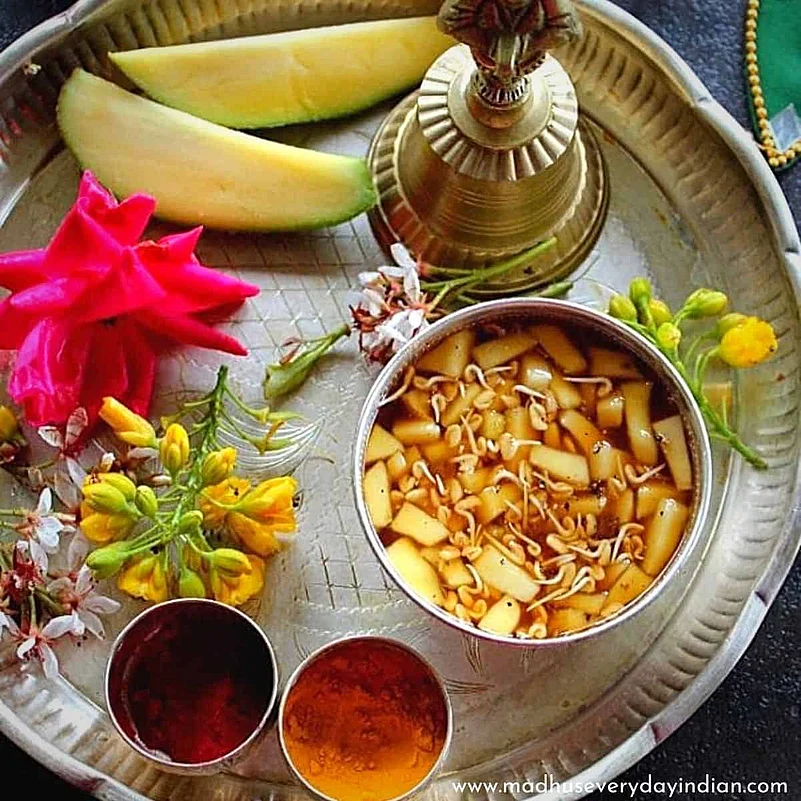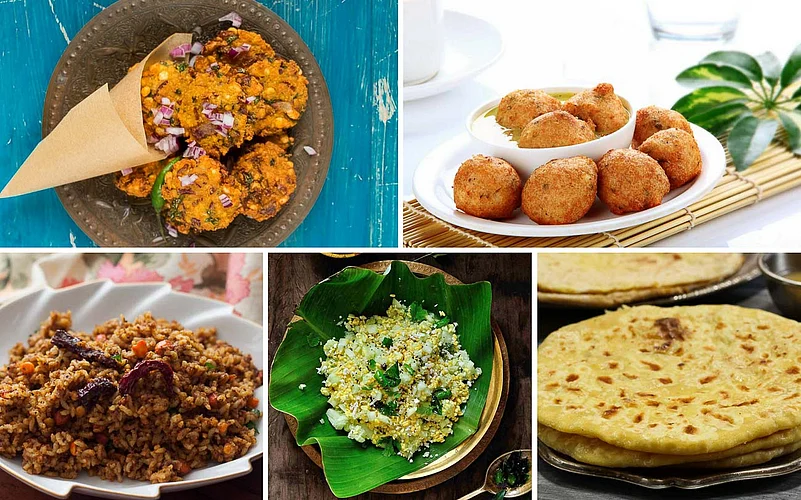Ugadi, also known as Yugadi, marks the New Year in the states of Andhra Pradesh, Telangana, and Karnataka. This auspicious festival, which typically falls in March or April, signifies the arrival of spring and the beginning of a new Hindu lunar calendar. One of the highlights of Ugadi celebrations is the preparation and sharing of special dishes that hold cultural and symbolic significance. Let라이브 바카라 explore some of the traditional delicacies prepared during Ugadi.
Traditional dishes to try during the Ugadi festival
Ugadi Pachadi

is a traditional dish prepared during the Ugadi festival, which marks the beginning of the Telugu and Kannada New Year. It is a unique dish that combines six different flavors: sweet, sour, salty, bitter, spicy, and tangy. These flavors represent the various experiences of life, both good and bad. The ingredients used in Ugadi Pachadi vary from region to region, but they typically include raw mango, tamarind, jaggery, neem flowers, chili powder, and salt. Ugadi Pachadi is a symbolic dish that reminds people to embrace all aspects of life with equanimity.
Holige

a sweet flatbread, is a quintessential Ugadi delicacy. The process begins with preparing a dough of maida or wheat flour, which is then rolled out into small discs. A filling, often made of chana dal, jaggery, cardamom, and sometimes coconut, is cooked until thick and smooth. This sweet mixture is then stuffed into the dough discs, which are carefully sealed and rolled out again into thin, flat circles. Finally, these are cooked on a hot griddle with ghee until golden brown spots appear, resulting in a delicious, sweet treat that signifies the festive spirit of Ugadi.
Kesari Bath

a sweet semolina pudding, is a quintessential dish during Ugadi celebrations. To prepare it, semolina is roasted in ghee until fragrant, then cooked with boiling water, sugar, and saffron, which imparts its signature golden hue. Cardamom powder and roasted cashews and raisins are added for flavor and texture. The dish is simmered until it reaches a thick, smooth consistency, resulting in a rich and aromatic sweet that symbolizes the sweetness of the new year.
Bisi Bele Bath

, a flavorful rice and lentil dish, holds a special place in Ugadi celebrations, particularly in Karnataka. It's a comforting and wholesome meal, often prepared to welcome the new year with a blend of sweet, sour, spicy, and savory flavors, reflecting the diverse experiences of life. The dish involves cooking rice and lentils with a variety of vegetables and a unique spice blend, creating a rich and aromatic one-pot meal that's both satisfying and culturally significant during the Ugadi festival.
Panakam

a traditional South Indian beverage, is a refreshing and significant part of Ugadi celebrations. It's a simple yet flavorful drink made primarily with jaggery, which is dissolved in water, and then enhanced with the tangy zest of lemon juice. Aromatic spices like cardamom and dry ginger powder are added to create a harmonious balance of sweet, sour, and spicy notes. This cool, healthful drink is particularly enjoyed during Ugadi as it provides a soothing relief from the rising temperatures, and is often offered as a prasad during the festival.
Mango Rice

, also known as Mamidikaya Pulihora or Mavinakayi Chitranna, is a popular South Indian dish often prepared during Ugadi, the Telugu and Kannada New Year. It's a tangy and flavorful rice dish made by tempering spices like mustard seeds, urad dal, and chana dal in oil, then adding grated raw mangoes, turmeric, and salt. This mixture is then combined with cooked rice, creating a delightful balance of sour and savory flavors. Often, roasted peanuts are added for a crunchy texture. The dish is a seasonal favorite, taking advantage of the abundance of raw mangoes, and is a welcome addition to the festive Ugadi meal.
Kosambari

a refreshing salad, is an integral part of Ugadi celebrations, particularly in Karnataka. It's typically made with soaked lentils, such as moong dal or chana dal, combined with grated vegetables like carrots and cucumbers, and fresh coconut. The salad is then seasoned with a simple tempering of mustard seeds, curry leaves, and sometimes green chilies, and finished with a squeeze of lemon juice. This light and healthy dish symbolizes the fresh start of the new year, and its combination of flavors perfectly complements the other sweet and savory dishes prepared for the festival.
The Ugadi feast is more than just a collection of delicious dishes; it is a culinary tapestry woven with symbolism, tradition, and a deep appreciation for life's multifaceted nature. From the Ugadi Pachadi, representing the bittersweet symphony of life, to the Bobbatlu, symbolizing prosperity, each dish plays a vital role in celebrating the New Year with joy, hope, and a renewed sense of purpose. By embracing the flavors and traditions of Ugadi, we not only tantalize our taste buds but also nourish our souls, preparing ourselves for the journey ahead with grace, resilience, and a grateful heart. So, as you celebrate Ugadi, remember to savor the flavors, cherish the traditions, and embrace the sweet and sour, bitter and salty, spicy and astringent experiences that life has to offer, for they are what make our journey truly meaningful.
Have a Happy and Delicious Ugadi!
Follow 바카라 Experiences:
| | |















